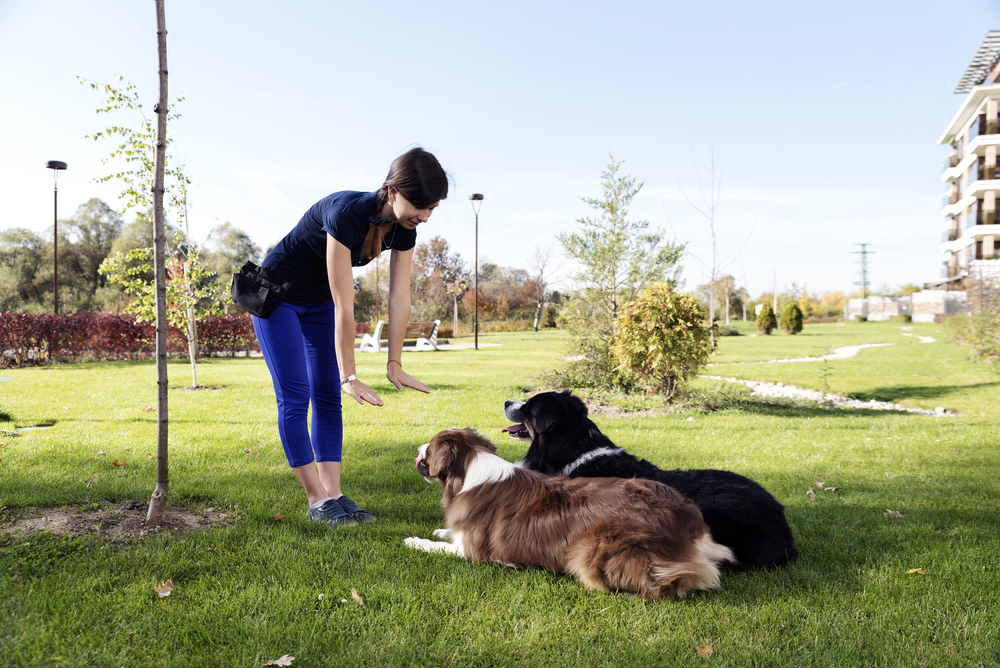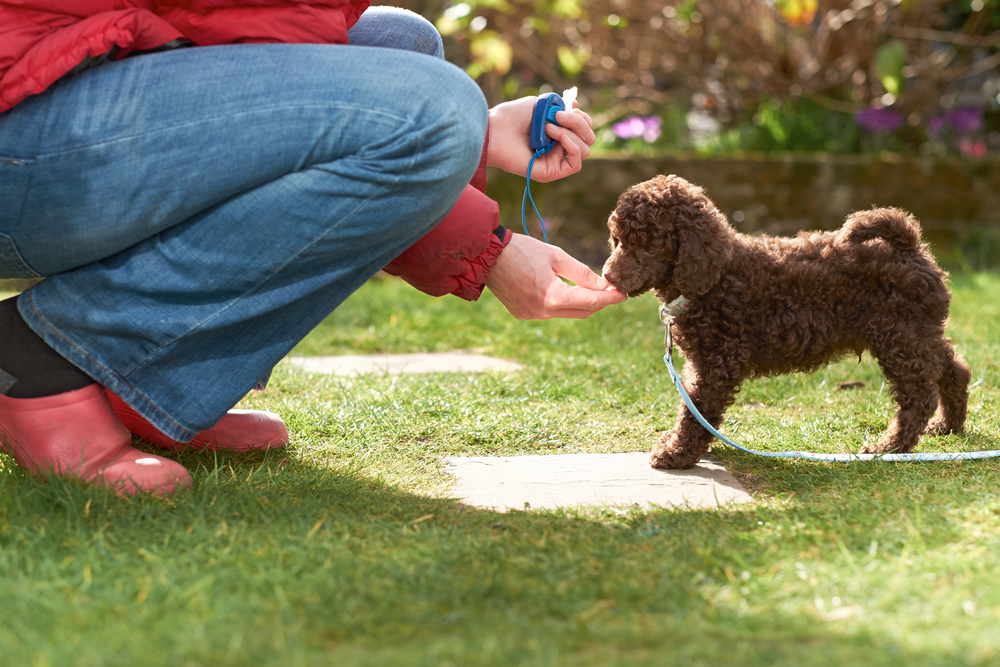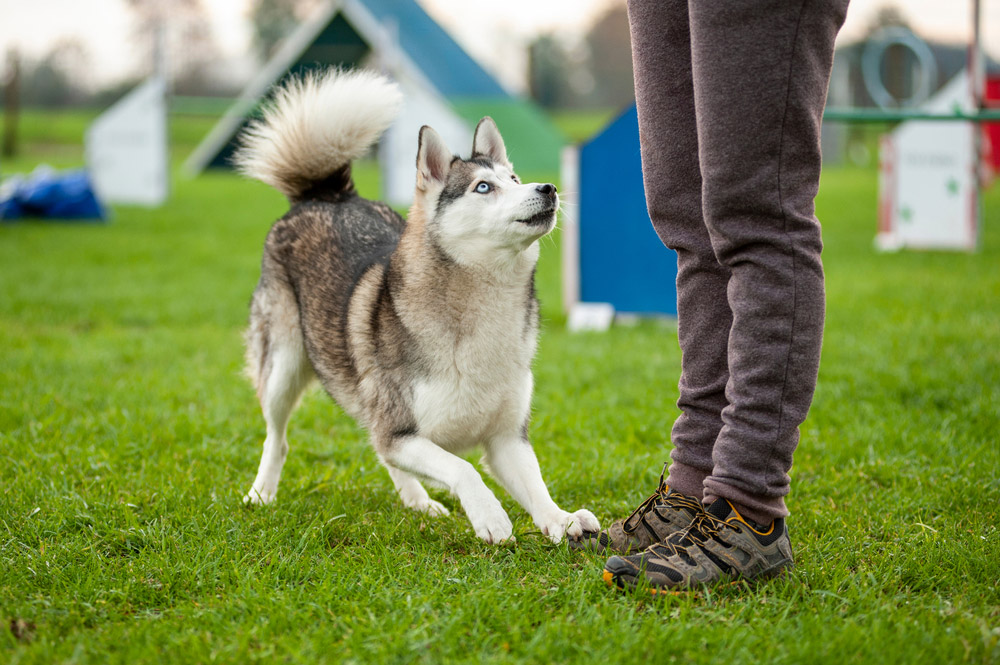Click to Skip Ahead
Training a dog isn’t always smooth sailing and for many new owners, it’s more than they can handle alone. In some instances, daily professional help still isn’t enough to manage behaviors stemming from issues like reactivity, aggression, and separation anxiety.
Significant training troubles may require a more intensive approach. When you’re constantly struggling with obedience and poor habits, sending your dog to puppy reform school, or “board and train,” can be tempting. Unruly dogs enter, and well-behaved and socialized dogs exit. Sounds like a fuss-free solution, right?
While board and train can seem efficient for many pet parents, it isn’t the miracle fix some owners expect. Alongside the unique benefits, there are plenty of downsides to consider. Let’s explore the pros and cons of board and train facilities so you can plan the most effective training path for you and your dog.
What Is Board and Train?
“Board and train” refers to training programs where owners leave their dogs for several days at a facility. Dogs train and socialize during the day and sleep in their kennels at night. Most facilities offer several programs to select based on your dog’s unique needs, such as:
- On-leash training
- Off-leash training
- On and off-leash training
- Behavior modification (fear, predation, resource guarding, etc.)
- Aggression management and socialization
Regardless of their focus, most board and train programs train basic obedience and training commands, like sit, stay, down, and come. Dogs also learn essential manners, and the interactions and proximity to other dogs supply socialization opportunities.
Programs can run anywhere from one week to over two months, depending on the course specialization. Most run for 2–5 weeks. During the program, instructors and caregivers provide food, exercise, enrichment, sleeping setups, and everything dogs need to live comfortably.

Benefits of Board and Train Programs
Sending your dog away to live in a training environment among expert dog handlers for several weeks will undoubtedly improve their thinking and habits. Here are a few unique benefits of board and train programs.
Unique Training Opportunities
As the caregiver for your dog from the time they wake to the time they go to sleep, a trainer in a board and train program can cover more teaching areas than a professional who only works with dogs for a few hours during the day.
For example, dogs can gain essential skills like crate training or coping with fears with expert guidance in a board and train program. Dogs can learn entire routines and develop new standards for behavior in almost every aspect of their life to benefit them and their owners.
Accelerated Learning
In a board and train facility, dogs live and breathe training. They work on a structured schedule, training sessions take up much of the day, and the experts caring for them use consistent, informed methods to communicate and promote the proper behaviors. At the same time, the environment is controlled, with minimal distractions or triggers to engage a dog’s undesirable urges.
Board and train facilities maximize daily opportunities for dogs to learn the right behaviors and minimize the chances of practicing the wrong ones. They subsequently learn faster and solidify their understanding at a much faster rate.

Convenience and Practicality
Hands-free training may make you feel like a disconnected owner, but a board and train program can be a wise option in certain situations. If you work all day and know your dog has significant behavioral issues, a board and train program may be the solution you need to prepare them for doggy daycare or pet sitters.
Board and train is also a 2-in-1 solution when you have to board your dog. It may be appropriate when you are going on vacation for a few weeks or having work done at the house, such as a remodel or fumigation.
Drawbacks to Board and Train Programs
A board and train program is one of many training alternatives. It isn’t inherently better than standard 1-hour training sessions but is an ideal solution for some pet parents at certain times. Before you sign up for these weeks-long intensives, you must consider their downsides.
Cost
Hiring someone to feed, play with, clean, house, and care for your dog is unsurprisingly a pricey venture that only gets more expensive with more advanced training and longer stays. Classes usually cost in the thousands of dollars.

New Triggers and Distractions at Home
Board and train programs can rapidly enhance your dog’s understanding of obedience and manners, but those skills may not translate to the home. Dogs can have a tough time generalizing commands and behaviors. They need training in diverse situations to understand that rules, cues, and desired habits always matter regardless of what they see, hear, smell, or feel.
Most expert trainers know this principle and try to create numerous learning scenarios to build those generalizations. Some programs even have dogs live with trainers in their homes and employ training in real-world settings that will be more familiar once the dog is back with the owner.
Still, no board and train program can account for every unique environmental factor or routine in your home. All their training could fly out the window with a novel trigger or distraction in the house your dog isn’t ready to handle. The lessons they learn at the board and train facility must continue at home so they understand the behaviors still apply.
Separation Stress for You and Your Pet
Acclimating to a new living environment is stressful for many pets, and an inability to stay calm makes for a challenging training situation. Many board and train programs can’t hit the ground running with new dogs.
Instead, they afford an acclimation period to let dogs settle in before training them. The adjustment period can last from three days to over a week, giving you less value for your dog’s time at the training facility.

Undesirable Training Techniques or Boarding Conditions
Thorough research and visits to board and train facilities are essential before picking a program, as many won’t meet your standards. The sleeping setup, food, exercise and enrichment routine, and grooming are just some of the vital aspects that may not agree with you or your dog. Then, there’s the training approach.
Some board and train businesses use e-collars (shock collars) and other aversive training techniques. Dog boot camps sometimes try to resolve high-level behavioral issues quickly, cramming what normally takes months to train into only a few weeks.
To improve results in the shortest time, trainers typically apply positive punishment alongside positive reinforcement. Beyond the concern over fallout, research suggests that e-collars aren’t more effective at resolving obedience issues.
You Don’t Learn With Your Dog
Training the owner is more crucial than training the dog to get them to show good behaviors in the long term. Owners must reinforce training throughout their dogs’ lives. To do this, they need a workable knowledge of using effective techniques at home.
Compared to other training programs, board and train services don’t always offer as much to promote that success. Even if your dog learns to follow their trainer, you can’t always be sure you’ll see that obedience when you get them home.
Daily training sessions end with instructors giving owners tips and advice to apply at home. Owners and their dogs get the full benefit of each session when they can sit in on classes.
With more control over and immersion in the training process, they can improve their bond with their dogs and establish a leadership position their pets will be more apt to follow.

Choosing a Board and Train Option
Considering the high cost and potential effects of using a board and train program, this decision requires the utmost attention and care. The following are some of the crucial questions you should ask before choosing.
- Which training methods does the trainer use? What diet and activities will your dog enjoy?
- What credentials does the trainer have? Do they have a lot of recent positive reviews? What do past clients say about the experience?
- What training and support do pet parents receive? Will the trainers offer added owner meetings after the program?
- Where do the dogs stay when they aren’t training? Are they in cramped kennels or spacious, individual living quarters?
- Can you visit your dog? How does the facility let you check in and monitor their progress?
- Do other dogs at the facility seem happy, safe, and well-tended?

Final Thoughts
Although board and train can have immense benefits as part of a broader training outlook, owners must be realistic with their expectations. They aren’t magical cure-alls, and the training won’t stop when your dog graduates. Appreciating their unique pros and cons, you can decide when to use these intensive courses to get your dog’s behavior on the right track.
Featured Image Credit: Christian Mueller, Shutterstock











